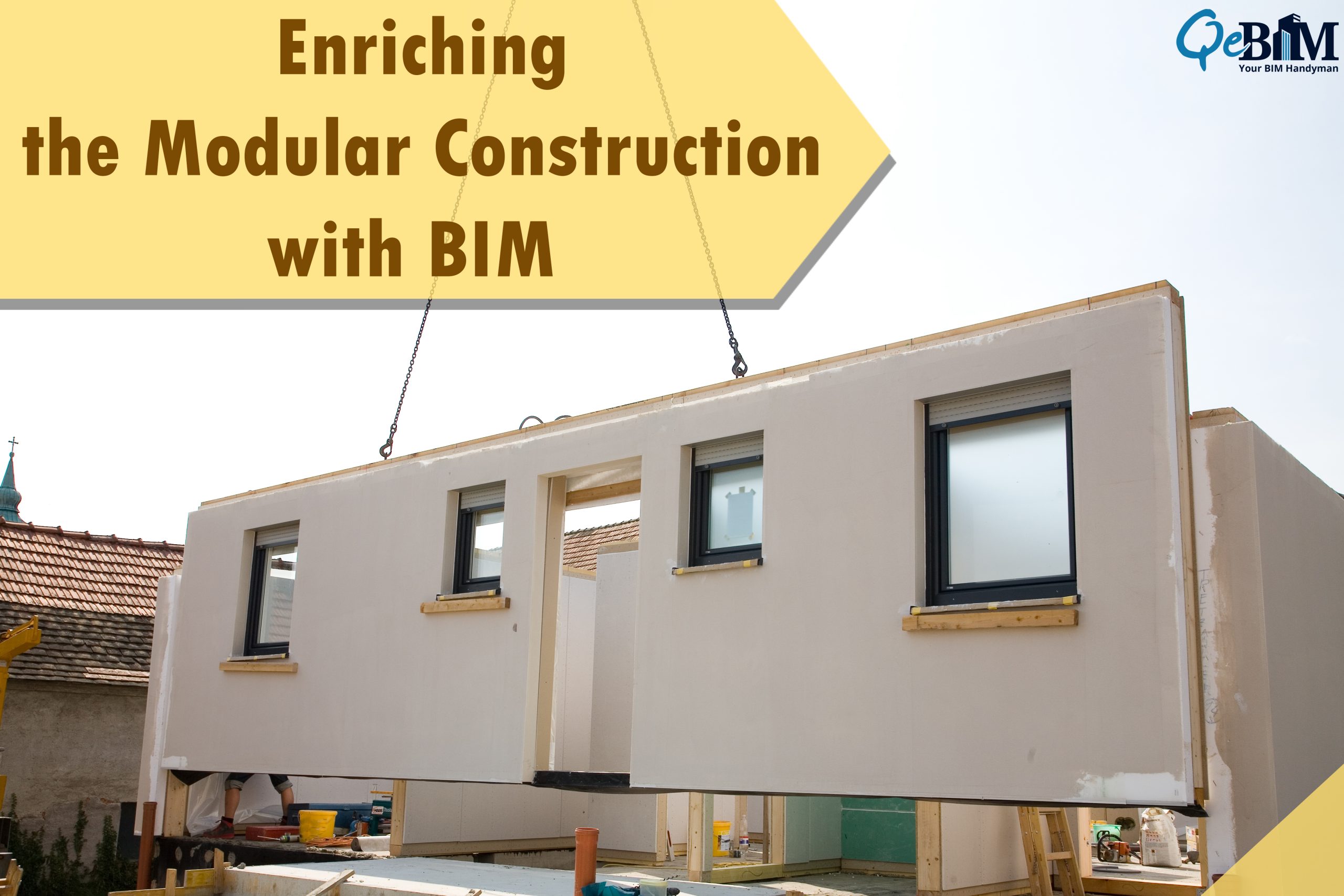Enriching the Modular Construction with BIM

BIM, or Building Information Modeling, plays a vital role in the modular construction process by assisting in creating an accurate prototype of prefabricated building components before the actual manufacturing.
What is Modular Construction?
Modular construction is a methodology where the structural units or modules are manufactured and fabricated off-site and later assembled and installed on the construction site. Modular construction provides multiple benefits over traditional construction, as mentioned:
- Accelerating the construction speed
- Cutting down the costs
- Enhanced quality
- Increased site safety
- Less workforce involvement
- Reduction in environmental impact
Though modular construction is a boon for the construction industry, it has its own challenges.
- Prefabricated units sometimes might not precisely be manufactured
- Chances of rework may increase, thereby incurring additional costs
- Meet specified design and operation criteria
- Optimal distribution of MEP systems and so on
Technology like BIM can come to the rescue to deal with such challenges. BIM is the most potent tool while designing and can be used for fluently coordinating and documenting the fabrication of MEP systems. As modular construction becomes more significant than traditional building methods, BIM plays an important role in reinforcing and streamlining the construction and fabrication processes. Digitization of the construction design with BIM for Modular construction saves time and costs to a greater extent.
Implementing BIM in Modular Construction
BIM Modeling Services creates a 3D rich model for representing the insights of building modules, geometry, and space for relevant building systems. Once the BIM model is ready for modular construction, we can easily fetch the detailed fabricated shop drawings of the building components. These digitized drawings are extracted with the help of BIM to review and tag along the work between multiple trades. Manufacturing of modular components starts once the coordinated prefabrication drawings are prepared and complied with. Implementing BIM in modular construction holds many advantages.
What are the Benefits of Collaborating with BIM in Modular Construction?
1) BIM helps analyze the site data accurately and provides the apt measurements of prefabricated modules. It enables the perfect fitting of building components, avoiding any leakages.
2) BIM enables digital design flow to streamline the off-site fabrication workflow for all disciplines.
3) BIM enhances the communication among project members for efficiency in designing and construction. Information stored in a 3D BIM model can be accessed and shared among the team via a centralized repository that keeps multiple team members on the same page throughout the project’s lifecycle.
4) Comprehensive model-based shop drawings improve fabrication and modular construction quality.
5) BIM helps produce and effectively assemble the prefabricated panels for modular construction.
6) BIM Coordination services ease the coordination and fabrication of MEP components. It ensures seamless integration among plans and designs, sticking to the project schedules.
7) It identifies clashes and collisions and addresses the design flaws beforehand, saving time and money and reducing the chances of reworks and risks.
8) With BIM technology in Modular Construction, the control of the end product is higher through appropriate surveillance.
9) Integrating BIM in Modular construction can reduce the wastage of prefabricated material by up to 90%.
10) BIM in a modular construction project uses materials and labor more efficiently.
11) BIM has integrated marketing applications that provide easy access to 3D models, renders, and walkthroughs as and when required.
12) BIM is beneficial in modular construction when working with construction documentation, rapid prototypes, exterior and interior finishing, and MEP fixtures.
13) BIM accelerates the scheduling of the project, allowing quick prefabrication and installation of MEP components.
BIM in Modular Construction is of Utmost Importance
Modular construction can speed up economic development. Integrating BIM in modular construction accelerates the construction process boosts the quality and can deliver sustainable buildings that are resource-efficient, cost-effective, energy-efficient, and pleasant for occupants throughout their life cycle. BIM in the construction industry will unearth many more benefits for modular and industrialized construction.